Dressing up the past
Shanghai enthusiasts recreate ancient clothing styles
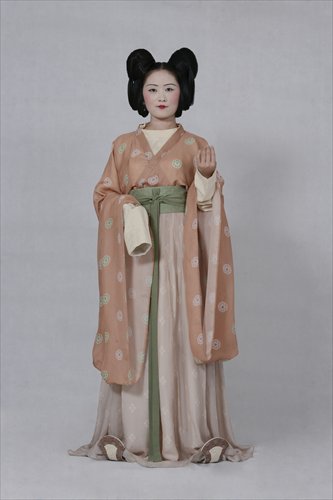
A model shows a costume created by the Ancient Chinese Clothing Restoration Team. Photo: Courtesy of the Ancient Chinese Clothing Restoration Team

A model shows a costume created by the Ancient Chinese Clothing Restoration Team. Photo: Courtesy of the Ancient Chinese Clothing Restoration Team
Today very few Chinese people know exactly how their ancestors used to dress. Because of budget restrictions and a lack of proper research, filmmakers and producers of television series about historical figures rarely show accurate representations of the costumes of the times. Often the characters are shown in bizarre costumes that have no relationship to the actual clothes of the period.
Until seven years ago genuine costumes from past eras could only be found in some museums or portrayed in historical records. But in 2008 a group of young people in suburban Minhang district started a project to recreate clothes and costumes from old dynasties. Members of the group spend days at a time checking ancient documents and paintings to obtain detailed information about the styles, materials, colors and patterns used in ancient times.
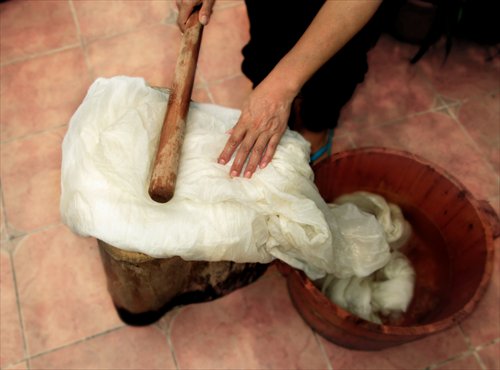
Raw silk has to be pressed before being processed. Photo: Courtesy of the Ancient Chinese Clothing Restoration Team
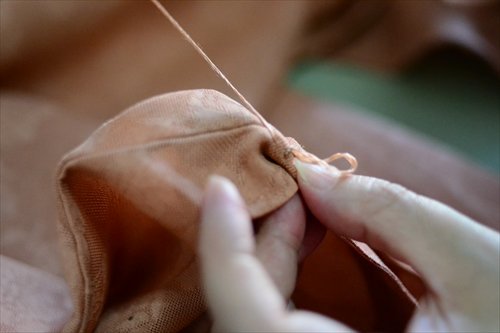
Precise needlework is one of the requirements for costume recreation. Photo: Courtesy of the Ancient Chinese Clothing Restoration Team
After a great deal of research and practice over the years the group has successfully and accurately recreated several costumes from the past. "It would be a great shame if modern Chinese people could only see what their ancestors wore in museums," said 29-year-old Liu Shuai, the leader of the Ancient Chinese Clothing Restoration Team.
"We hope that one day people will be able to actually try on and wear some of these beautiful old costumes and experience their beauty in person," he said.
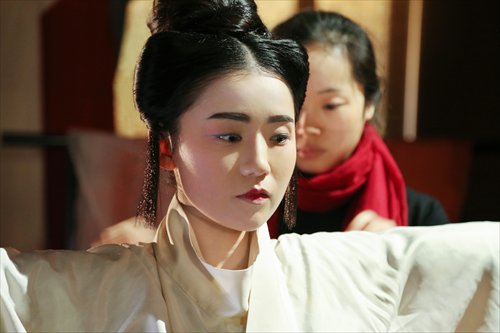
A model is prepared for a showing by a team member. Photo: Courtesy of the Ancient Chinese Clothing Restoration Team
No shortcuts
The group does not take shortcuts in its work and each recreation takes a lot of time and energy. For each costume the group first undertakes serious research, checking the historical documents of that dynasty and examining any examples kept in museums.
"Then we design the patterns and choose the right fabrics. We weave and dye the fabrics, embroider or print the patterns on them, and eventually sew the costumes," Liu said.
When a new costume has been completed the group looks for a model to wear the clothes for photographic sessions. Liu is as strict about the type of models chosen as he is about the historical accuracy of the recreations themselves. His models have to be graceful in a classical manner and have long black hair - anyone who has permed hair is discounted immediately. However the only apparent requirement for a male model is that he looks good.
Liu's team applies the same rigorous strictures they have for the clothes when they dress models as they do for makeup and hair styling. They seldom use modern hair sprays but apply paohuashui, a traditional formula made of water and elm bark. This was what women in ancient China used to mold their hair into buns.
Controversially they also use traditional lead-based creams as cosmetics. Most of the ancient cosmetics, like rouge, had a lead base and this has the potential to cause lead poisoning in users. But Liu defends the use of the traditional recipes, adding that many modern cosmetics contain harmful chemicals as well.
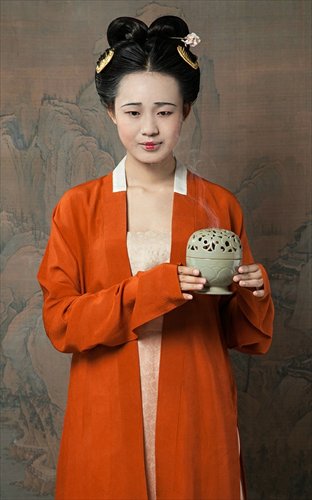
A model shows a costume created by the Ancient Chinese Clothing Restoration Team. Photo: Courtesy of the Ancient Chinese Clothing Restoration Team
For sale
Usually it costs the team between 10,000 yuan ($1,562) and 20,000 yuan to recreate one of their costumes. The team pays for its work by selling some of its recreations to enthusiasts. "Some of our ancient-style costumes are made to order," Liu said. "Occasionally we have clients who are interested in traditional Chinese clothing culture and want to wear a particular outfit."
Strangely the team refuses to make costumes for films. "A few filmmakers have wanted to order our costumes, but most of them are only interested in how they look on screen and they don't care about the details."
Liu is also working with museums. A recent Silk Road exhibition in Turkey showcased three of the team's costumes and other examples have been exhibited at museums in Nanjing and Hangzhou.
Last year, the group published a crowd-funded book on its work - Clothing Between the Han (206 BC-AD 220) and Jin Dynasties (265-420).
Compiled by Huang Lanlan based on a story in The Bund pictorial